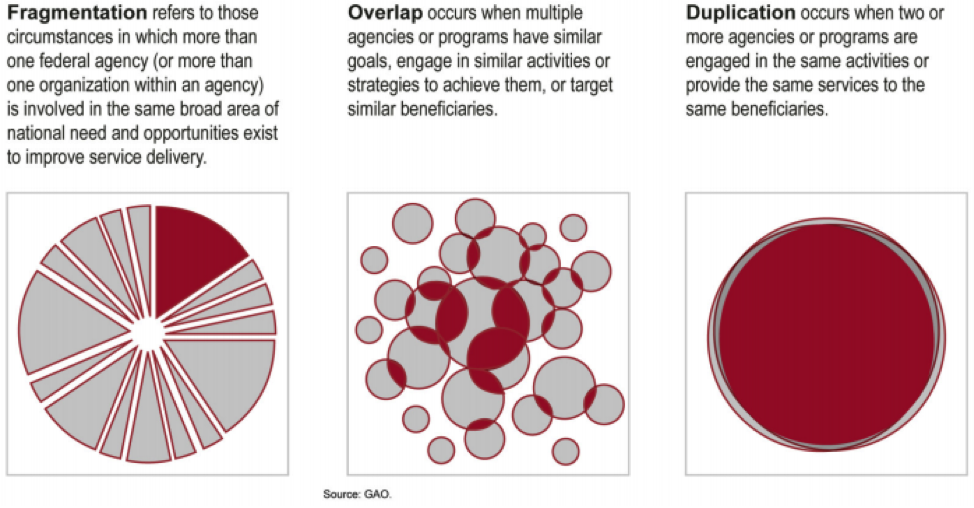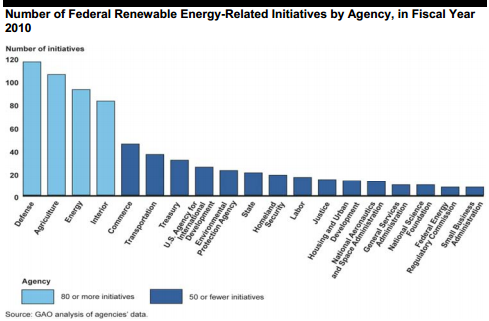As PERC’s Rick Stroup often says, “Efficiency has no constituency,” and that’s certainly true of environmental policy. The federal government is replete with inefficiencies resulting from overlapping, redundant, and wasteful spending programs.
Over the last three years, the Government Accountability Office has outlined 131 areas of wasteful and duplicate spending by the federal government. The GAO released its latest report last month, identifying an additional 31 areas to improve efficiency and effectiveness across the federal government. Below are a few of the “no-brainer” actions the GAO identified that relate to energy and agriculture.
1. Three separate federal agencies are responsible for catfish inspections, a duplication that costs taxpayers millions.
The 2008 farm bill assigned the U.S. Department of Agriculture responsibility for catfish inspections—a task already carried out by two other agencies: the FDA and the National Marine Fisheries Service. The GAO estimates that eliminating the USDA’s catfish inspection would save taxpayers $14 million “without affecting the safety of catfish intended for human consumption.” (The White House’s proposed budget for 2014 would eliminate the USDA’s catfish inspection program.)
2. Renewable energy initiatives are fragmented across 23 agencies and 130 sub agencies.
In 2011, nine federal agencies implemented 82 overlapping and duplicative wind-related initiatives, “including 7 initiatives that have provided duplicative… financial support to the same recipient for a single project,” the GAO found. In 2010, 679 renewable energy initiatives were spread across dozens of different agencies, costing taxpayers $15 billion. Regardless of how you feel about renewable energy subsidies, reducing agency duplication and fragmentation is a no brainer.
3. Three rural water infrastructure programs with a combined funding of $4.3 billion could be coordinated between federal agencies to reduce state grant application costs.
The Environmental Protection Agency and the USDA manage three rural water infrastructure assistance programs. To apply for these grants, states are required to submit engineering reports that cost $5,000 to $50,000 to each agency. Considering there were 54 projects reviewed by the GAO, this number contributes to considerable waste in state budgets. To the EPA and USDA’s credit, in October the GAO reported that the two agencies “have taken some actions to coordinate their programs and funding at the federal and state levels to help meet the water infrastructure needs of rural communities.”
4. By aligning fees with program costs, the USDA’s Animal and Plant Health Inspection Service could “achieve as much as $325 million in savings.”
Carried out by the Department of Homeland Security and Customs and Border Patrol, the Animal and Plant Health Inspection Service inspects passengers and cargo, seizes contraband, and intercepts pests, which could have detrimental impacts on U.S. agriculture. This service charges those bringing goods into the country a fee that does not entirely cover the costs of the program. Should fees be increased to accurately reflect the costs of the program, the USDA could save as much as $325 million.
5. The federal crop insurance program could achieve up to $1.2 billion per year in cost savings through some combination of limiting and reducing subsidies.
In recent years, the cost of federal crop insurance programs has been increasing. The average annual cost of the program from 2000-2006 was $3.1 billion, which increased to $7.6 billion for 2007-2012. According to the Congressional Budget Office, this trend is poised to continue upwards to an average of $8.9 billion per year for 2013-2022.
Oddly enough, despite increased crop insurance costs, the profitability of farmers has also been rising. “The top 6 years for net farm income during the past three decades have occurred since 2004,” according to the GAO report. “To achieve up to $1.2 billion per year in cost savings in the Federal Crop Insurance program, Congress could consider limiting the subsidy for premiums that an individual farmer can receive each year, reducing the subsidy for all or high-income farmers participating in the program, or some combination of limiting and reducing these subsidies.”
Although opinions are sure to differ on whether or not these programs are a necessary function of government, both sides of the aisle should agree that reducing duplicated, fragmented, and overlapping programs is a no brainer.





